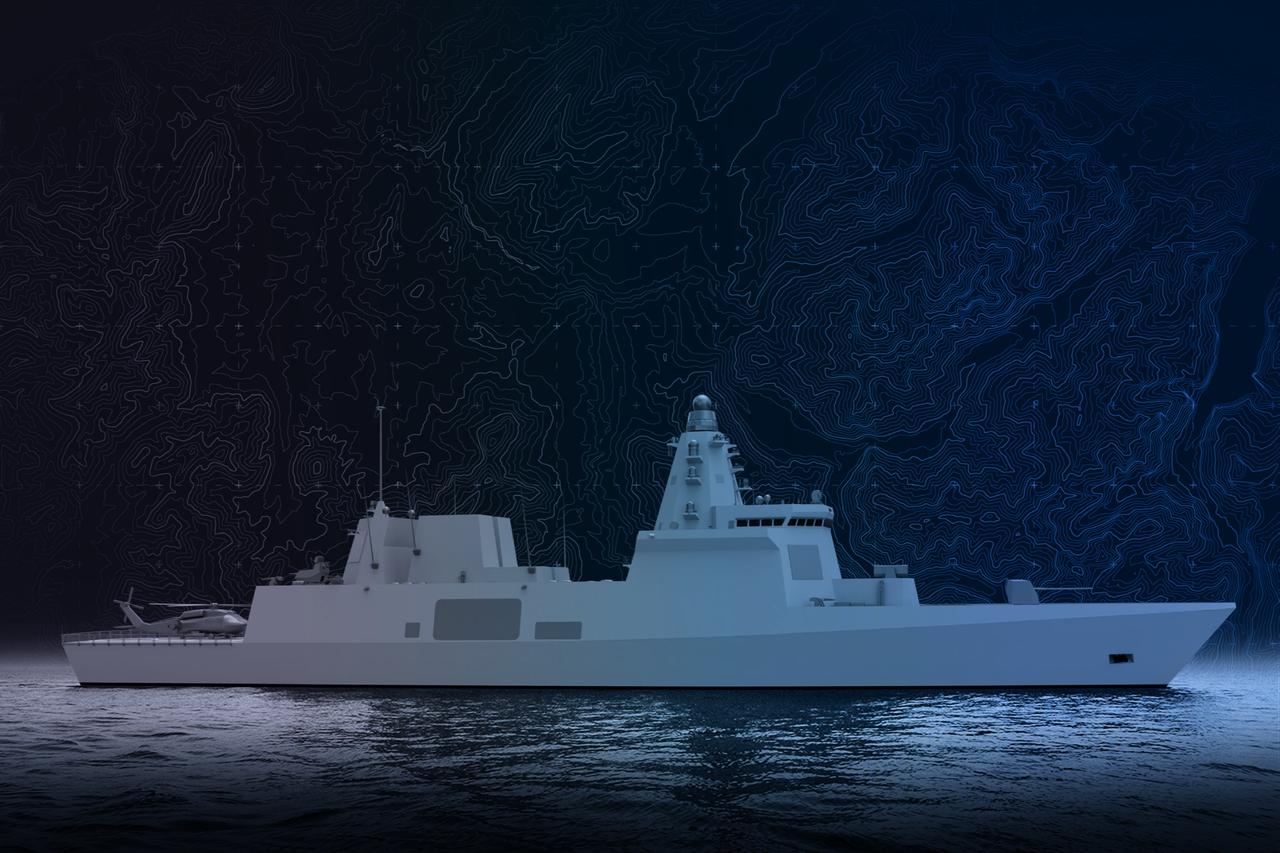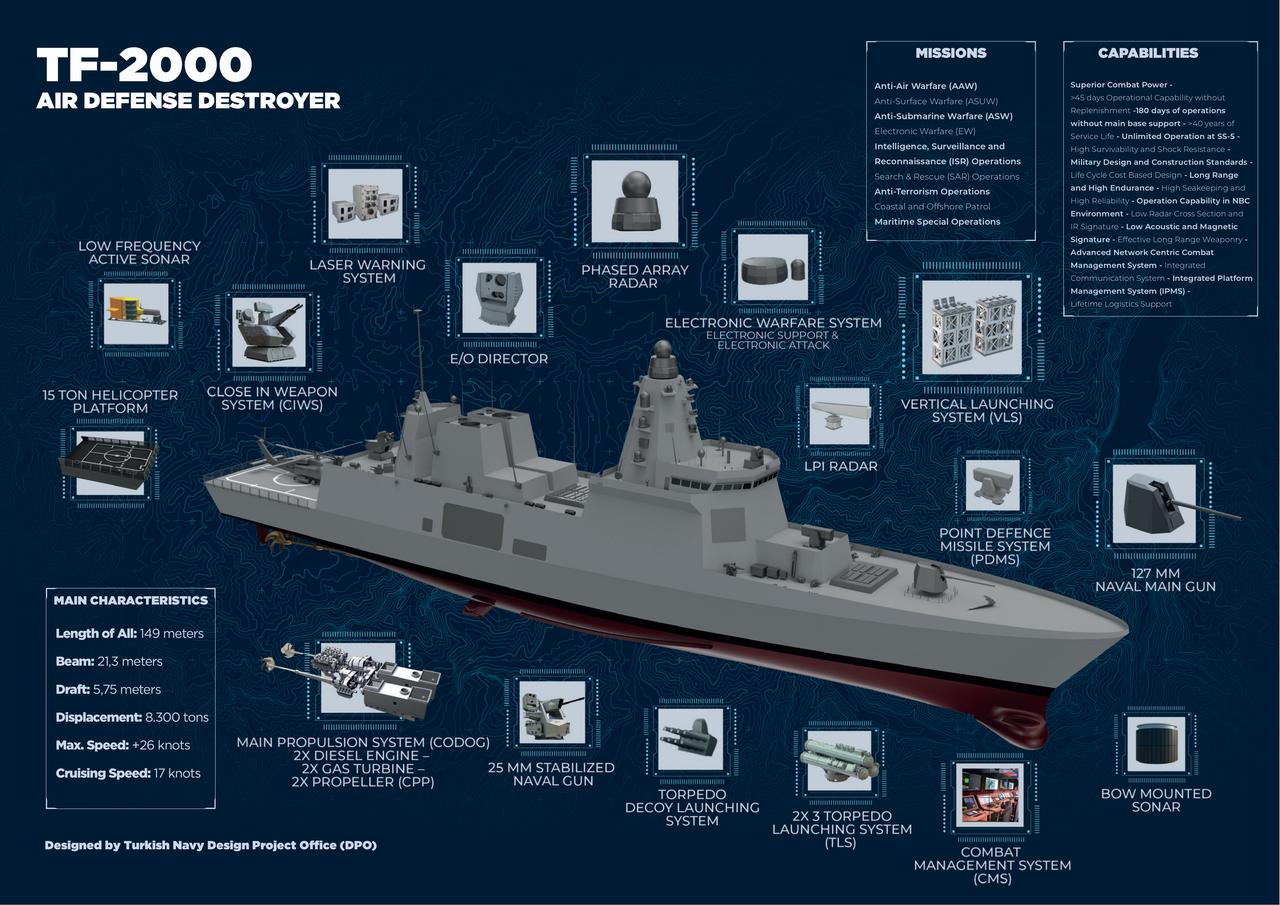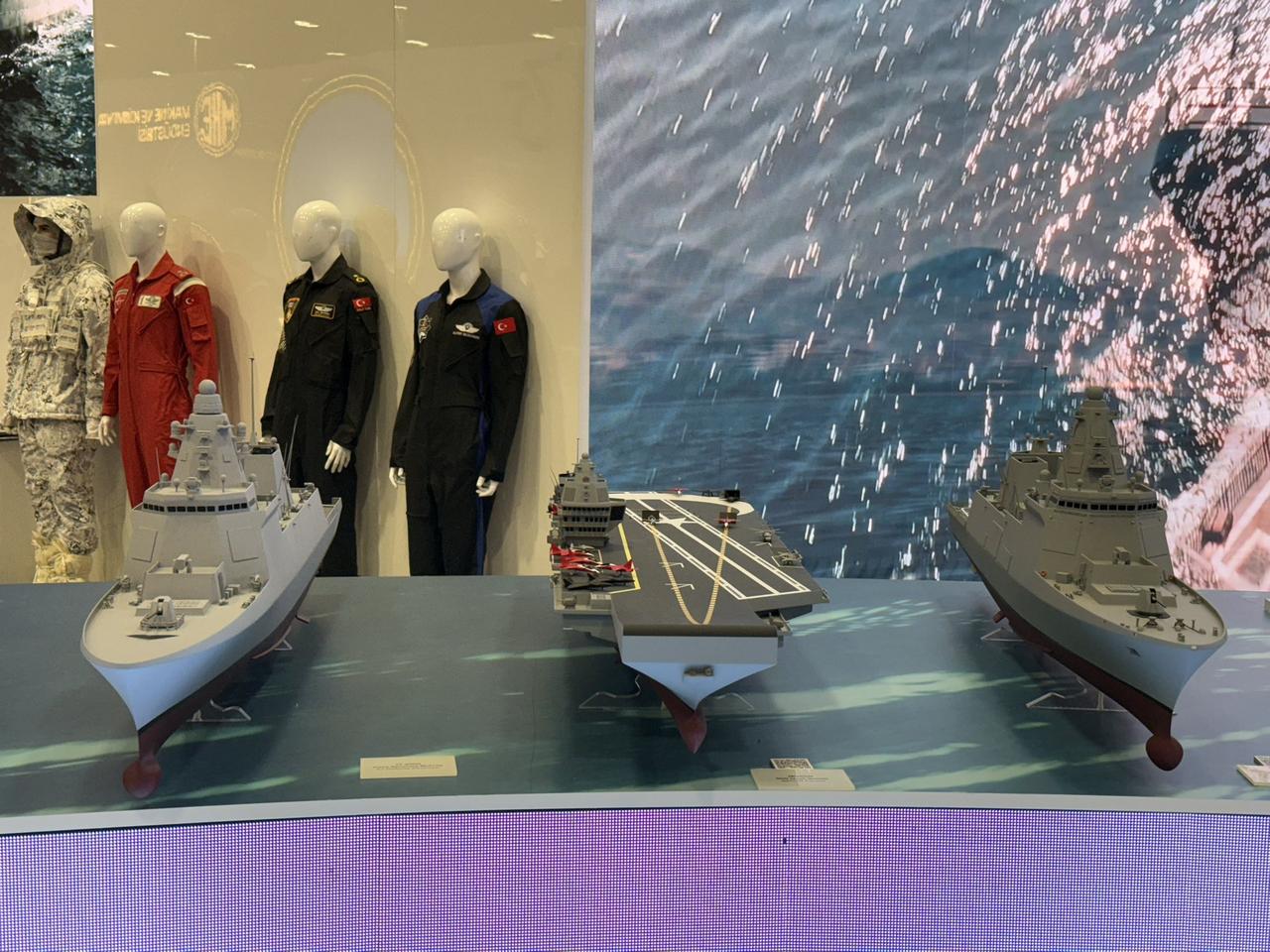
Turkish defense contractor ASFAT revealed comprehensive specifications for the TF-2000 air defense destroyer at the IDEF 2025 international defense exhibition, showcasing updated design features for Türkiye's first indigenous destroyer, expected to launch in 2028.
The 149-meter vessel, being constructed under the MILGEM project framework, will feature advanced capabilities for detecting and destroying short-, medium-and long-range guided and ballistic missiles, according to details shared by ASFAT, a defense industry company under Türkiye's Ministry of National Defense.
ASFAT CEO Mustafa Ilbas and Turkish Navy Commander Admiral Ercument Tatlioglu signed the construction agreement at the Presidency of Defense Industries (SSB) stand during IDEF 2025.
The deal covers the construction of one ship expected to be launched in 2028 and delivered to the navy by 2030. No dollar value was announced.
Steel cutting will begin in November 2025 at the Istanbul Naval Shipyard Command, where the vessel will be built. ASFAT hopes to build one full block of the ship before the end of this year, with the overall build consisting of about 60 blocks.
"In summary, this ship is going to be a game changer in air defense, not only to secure the sea but also the mainland," an ASFAT official told Breaking Defense in July.

Turkish media outlet TurDef reported that ASFAT displayed the updated TF-2000 design at IDEF 2025, featuring a reworked arrangement of sensor/electronic warfare systems and slight structural changes.
The new mast includes a more solid layout for the CAFRAD dual-band AESA radar suite developed and produced by Aselsan. The CFR, or Multi-Function Radar (MFR) X-band AESA radar, is placed on the mast's lower side, with its role described as focusing on targets, while the larger S-band UMR, or Long-Range Searching Radar, serves as the main searching component.
Fixed electronic warfare system arrays are positioned above the CFR arrays, providing a more detailed glimpse of TF-2000's electronic warfare systems layout, which are anticipated to be more potent compared to those of I-class frigates.
The TF-2000 is envisioned to become a critical component of Türkiye's air defense architecture, serving both mainland defense and fleet air defense roles with the CAFRAD dual-band radar suite and air defense missiles of different capabilities, including ballistic missile defense.
Emerging technologies are being considered for the destroyer, including USVs and swarm-capable UAVs for asymmetric defense/offense capabilities.

Defense analyst Arda Mevlutoglu shared extensive commentary on X (formerly Twitter) about the project's broader implications: "TF-2000's ballistic missile prevention capability and mission necessitate a series of very difficult, deep, and comprehensive changes and transformations in terms of organization and doctrine."
"The strategic air defense duty and responsibility of Türkiye belongs to the Air Force Command. Ballistic missiles naturally fall within this scope. TF-2000 having ballistic missile defense capability means a sharing of duties and authority between the Naval Forces Command and Air Force Command," he noted.
"This will not be just an organizational, bureaucratic sharing or redefinition. Because for these ships to be able to prevent effectively, they need to be able to receive real-time data from land- and air-based sensors and intelligence sources," Mevlutoglu continued.
"This puts before us as a necessity full C4ISR harmony between air, land, and naval forces. There is a lot of work to be done and a long way to go in this regard. That aside, when TF2000 enters service, it will bring the air, land, and naval forces closer together than ever before," he concluded.